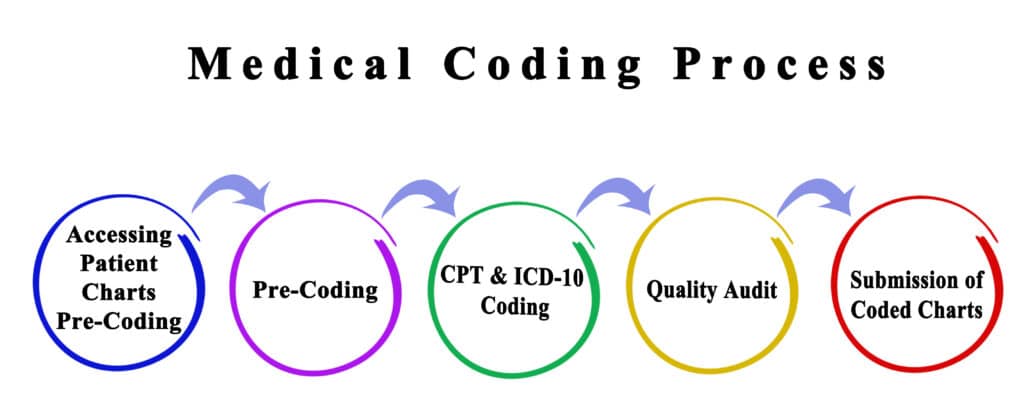
What Are CPT Codes?
CPT (Current Procedural Terminology) codes are a standardized set of medical codes used to describe medical, surgical, and diagnostic services. Developed by the American Medical Association (AMA), these codes are essential for accurately documenting and billing medical procedures and services. They facilitate uniform communication among healthcare providers, patients, and insurance companies, ensuring that the services provided are billed correctly.
Understanding CPT Codes
CPT codes are divided into three main categories, each serving a different purpose in the medical documentation and billing process:
Category I
Category I codes are the most widely used and cover procedures and services that are commonly performed by healthcare providers. These codes are divided into six sections:
- Evaluation and Management (E/M)
- Anesthesia
- Surgery
- Radiology
- Pathology and Laboratory
- Medicine
Category II
Category II codes are supplementary tracking codes used for performance management and data collection on quality of care. These codes are optional and help facilitate the tracking of important performance measures.
Category III
Category III codes are temporary codes used to describe emerging technologies, services, and procedures. These codes are used to collect data and track the usage of new and experimental procedures until they are approved for inclusion in Category I.
Types of CPT Codes
Evaluation and Management (E/M)
E/M codes cover services provided by physicians during patient visits. These codes are used to document and bill for consultations, office visits, and hospital visits. Example:
- 99213: Office or other outpatient visit for the evaluation and management of an established patient.
Anesthesia
Anesthesia codes cover the administration of anesthesia services during surgical procedures. These codes take into account factors such as the complexity of the procedure and the patient’s health status. Example:
- 00100: Anesthesia for procedures on the head, neck, and posterior trunk.
Surgery
Surgery codes cover a wide range of surgical procedures, from minor outpatient surgeries to major operations. These codes are detailed and specific to the type of surgery performed. Example:
- 23412: Repair of rotator cuff tear by reconstruction.
Radiology
Radiology codes cover imaging services such as X-rays, CT scans, MRI scans, and ultrasounds. These codes document the type of imaging performed and any necessary interpretation. Example:
- 70450: CT scan of the head or brain without contrast material.
Pathology and Laboratory
Pathology and laboratory codes cover diagnostic tests performed on specimens such as blood, tissue, and other bodily fluids. These codes are used to bill for tests that diagnose diseases and conditions. Example:
- 80050: General health panel.
Medicine
Medicine codes cover a variety of non-surgical services, including physical therapy, immunizations, and psychiatric services. These codes are diverse and cover many areas of medical practice. Example:
- 93000: Electrocardiogram, routine ECG with at least 12 leads; with interpretation and report.
Uses of CPT Codes
Billing
CPT codes are primarily used for billing purposes. They ensure that healthcare providers are accurately reimbursed for the services they provide. Medical Billing Services and Medical Billing Companies rely heavily on these codes to process claims and determine the amount of reimbursement.
Documentation
Accurate documentation of medical services is crucial for patient care. CPT codes provide a standardized way to document procedures and services, ensuring consistency and accuracy in medical records. Medical Billing specialists in Florida must be adept at using these codes to maintain precise and thorough documentation.
Tracking and Analysis
CPT codes are used to track healthcare services and analyze trends in medical care. This data can be used for research, quality improvement, and policy-making. For example, tracking the use of specific procedures can help identify trends in healthcare delivery and outcomes.
Examples of Common CPT Codes
- 99213: Office or other outpatient visit for the evaluation and management of an established patient.
- 93000: Electrocardiogram, routine ECG with at least 12 leads; with interpretation and report.
- 70450: CT scan of the head or brain without contrast material.
Conclusion
CPT codes are essential for the healthcare industry, providing a standardized system for documenting and billing medical services. By understanding and effectively using CPT codes, healthcare providers can ensure accurate billing, maintain precise documentation, and gain valuable insights into healthcare trends. Whether you are a Medical Billing Specialist in Florida, part of Medical Billing Services, or working with Medical Billing Companies, proficiency in CPT codes is crucial for optimizing billing processes and improving patient care.

